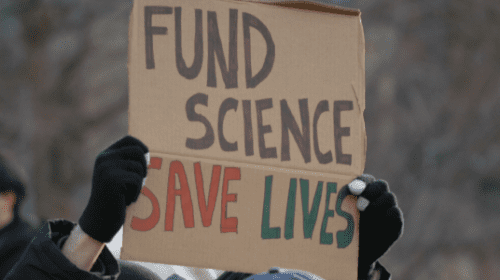Bipolar disorder is a commonly misunderstood mental health condition where people experience extreme mood swings. But it’s more than feeling happy one minute and sad the next; bipolar disorder is complex, and a person’s symptoms can disrupt various aspects of their life.
According to the National Institute of Mental Health (NIMH), approximately 2.8% of American adults live with bipolar disorder, affecting men and women equally. The average onset of symptoms is around age 25, but it can also occur in teenagers.
Understanding bipolar disorder can help break down the stigma and barriers to treatment faced by those living with the condition. It’s all about recognizing the importance of mental health and creating a safe space for everyone to thrive, regardless of their diagnosis.
Understanding Bipolar Disorder
Bipolar disorder is a mental health condition where people experience extreme highs and intense lows. The highs, or manic episodes, can involve feelings of euphoria, increased energy, and impulsivity.
The lows, or depressive episodes, can bring overwhelming sadness, fatigue, and loss of interest in activities the person once enjoyed.
Researchers believe many factors may contribute to someone’s chance of having bipolar disorder, including brain structure and functioning and genetics.
Types of Bipolar Disorder
Bipolar disorder is an umbrella term for three main types of the condition. There are also other types induced by drugs or alcohol or that present along with another medical condition, like multiple sclerosis or a stroke.
According to the NIMH, the three main types and symptoms of each are as follows:
Bipolar I
A person will have manic episodes every day for most of the day, lasting for seven days or more. They may also have manic symptoms requiring immediate medical care. Typically, they also experience depressive episodes with symptoms lasting at least two weeks. Additionally, they can have depressive symptoms and manic symptoms simultaneously.
“Rapid cycling” is when a person experiences four or more of these manic or depressive episodes within one year.
Bipolar II
A person will experience a pattern of depressive and hypomanic episodes. Hypomanic episodes are less severe than those experienced by people with bipolar I disorder.
Cyclothymic disorder
A person will experience recurring hypomanic and depressive symptoms that are not extreme enough or symptoms that don’t last long enough to qualify as episodes.
“Other specified and unspecified bipolar and related disorders” are when someone experiences symptoms of bipolar disorder that do not align with the three main categories.
Common Symptoms
The two main symptoms we generally think of for bipolar disorder are mania and depression.
The NIMH lists symptoms of a manic episode as:
- Feeling very high or elated
- Feeling more active than usual
- Jumpy, wired, touchy, irritable
- Feeling a decreased need for sleep
- Racing thoughts
- Fast-talking about many ideas
- An excessive appetite for pleasurable things (food, sex, alcohol, etc.)
- Feeling powerful or unusually important
The NIMH lists symptoms of a depressive episode as:
- Feeling very down, sad, or anxious
- Slowed down or restless
- Trouble falling asleep or sleeping too much
- Slow talking, forgetful, unable to find something to say
- Trouble concentrating or making decisions
- Feeling like you can’t do simple things
- Lack of interest in any activity
- Feeling worthless or hopeless
- Suicidal ideations or thinking about death
People living with bipolar disorder can experience extreme and unpredictable mood and behavior changes that significantly impact their daily lives and affect their work, relationships, and other areas.
The Impact of Bipolar Disorder on Daily Life
Some research suggests up to 40% of people with bipolar disorder are misdiagnosed with other mental health conditions like schizophrenia, anxiety, depression, obsessive-compulsive disorders, or other personality disorders. And it can take some people as long as 5 to 10 years to receive a proper diagnosis and appropriate care for their bipolar disorder.
Research suggests that more than half of people living with bipolar disorder also have a type of substance use disorder (SUD). Using drugs or alcohol to cope with symptoms of bipolar disorder may help to alleviate their symptoms temporarily but, in the long term, make their symptoms worse.
Bipolar Disorder Treatment
Healthcare providers can diagnose a person with bipolar disorder without brain imaging using their symptoms and medical history as a guide. Treatment for bipolar disorder is not a one-size-fits-all approach. It may take people years to determine what treatments best relieve their symptoms.
Medication to help with symptoms
Providers typically prescribe mood stabilizers and antipsychotic medications to help people manage their symptoms. It’s common for people living with bipolar disorder to try different medications until they find which work best.
Therapy to manage mental health
People living with bipolar disorder can use talk therapy to identify and work through their emotions, thoughts, and challenging behaviors. A trained therapist who specializes in patients living with bipolar disorder will provide education and guidance for the patient and their family.
Other treatments for bipolar disorder that may be helpful are light therapy, electroconvulsive therapy (ECT), and repetitive transcranial magnetic stimulation (rTMS).
Support Networks
People living with bipolar disorder work closely with a mental health provider on their treatment plan. Talking with close friends and family can help with accountability.
Joining online groups or meeting with community members who elevate mental health awareness is also beneficial. Healthcare providers or mental health therapists may have recommendations.
Myths About Bipolar Disorder
Stereotypes and stigmas make life more challenging for people living with bipolar disorder. It’s essential to address some of the common misunderstandings and shed light on people’s real experiences.
Myth #1: Bipolar Disorder is Just Mood Swings
Intense high and low mood changes are just one part of bipolar disorder symptoms. It also affects energy levels, sleep patterns, and someone’s thinking and behavior.
Myth #2: People with Bipolar Disorder are Unstable or Dangerous
Bipolar disorder doesn’t mean you’re unpredictable, with moods swinging from one extreme to another. Everyone’s experience is different, and their mood shifts can vary in frequency and intensity.
Myth #3: Medication is the Only Solution
While medication is a helpful tool in managing bipolar disorder, it’s not the only thing that helps. Therapy can be incredibly beneficial for learning coping skills, managing stress, and recognizing triggers. Lifestyle changes can also play a significant role in managing symptoms.
Thriving with Bipolar Disorder
Although dealing with your bipolar disorder diagnosis can be challenging, it’s possible to live a fulfilling and happy life despite it. The first step is to accept and embrace your diagnosis. Remember, it’s just one part of who you are. It’s not your entire being.
Taking care of yourself is super important, too. That means eating a nutritious diet, exercising regularly, managing stress, and prioritizing sleep.
Create daily routines and healthy habits you can stick to. Set realistic and achievable goals, and celebrate your progress along the way. Don’t forget to carve out time for activities you enjoy and spend time with people who give you energy, not those who drain it.
Be mindful of when and why your mood shifts to help you recognize what triggers your symptoms, and don’t be afraid to ask for help when you need it.
Musicians Living with Bipolar Disorder
Selena Gomez
The actress and singer was diagnosed with bipolar disorder in 2018. “I felt a huge weight lifted off me when I found out,” she said in a 2021 interview with Elle. “I could take a deep breath and go, ‘Okay, that explains so much.’”
Kanye West
The artist opened up about his bipolar disorder and referred to it as having “a sprained brain.” “I feel a heightened connection with the universe when I’m ramping up. It is a health issue,” the musician said in a 2019 interview with David Letterman.
Mariah Carey
The singer was diagnosed with bipolar disorder II after being hospitalized in 2001 and now takes medication and goes to therapy. “Until recently, I lived in denial and isolation and constant fear someone would expose me,” she says. “It was too heavy a burden to carry, and I simply couldn’t do that anymore. I sought and received treatment, I put positive people around me, and I got back to doing what I love — writing songs and making music,” she said in a 2018 interview with People.
Bebe Rexha
The singer talks openly about her bipolar I diagnosis and how, at first, she was nervous about taking medication. “I was really scared that it was going to change who I was and flatten me out,” she said in an interview with SELF magazine.
“[Medication has] maybe helped me be a little bit more insightful and learn things about the world and also allowed me to be a little bit more centered so that I can actually write about my feelings.”
Rexha talked about her severe mood swings and explained her mania symptoms, “I would get super hyper, and I would text everybody, and I’d just get sloppy. I couldn’t control my emotions, and I was always super anxious, and couldn’t sit still,” she said.
Musicians and other creatives often channel their intense emotions into their art. Despite the challenges they face, they demonstrate resilience and humanity, proving that bipolar disorder does not define them or limit their potential.
Bipolar Disorder Resources
Depression and Bipolar Support Alliance: DBSA
NIMH Digital Shareables on Bipolar Disorder
International Bipolar Foundation
Books
An Unquiet Mind, A Memoir of Moods and Madness by Kay Redfield Jamison
A Brilliant Madness by Patty Duke
The Years of Silence Are Past by Stephen Hinshaw
His Bright Light: The Story of Nick Traina by Danielle Steel
If you’re living with bipolar disorder, consider sharing your story to support others or get involved with advocacy and awareness initiatives in your area.

























